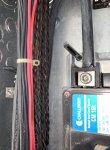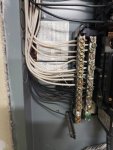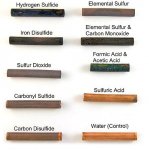Peter Furrow
We’re not born humble, we’re born to be humbled
- Location
- Cape canaveral Fl
- Occupation
- Electrical contractor

The attached photo shows black soot on the grounding conductors in an electrical panel. Initially i thought this may have been caused by a lightning event. However, I just been informed that this may be due to Chinese drywall or sulfur in the well water.
The homeowner just purchased this home and the home insurance company obligated him to replace the Challenger panel. When we removed the panel cover to commence work , we discovered the black soot on all the exposed portions of the copper wire.
The homeowner told me the home inspection report just indicated corrosion. But, corrosion on copper wire is usually green.
I can’t tell you how many electrical panels and replaced in the past 12 years since I’ve been in business and prior to starting my business.
I’ve never seen this before.
Any thoughts?
Sent from my iPhone using Tapatalk




